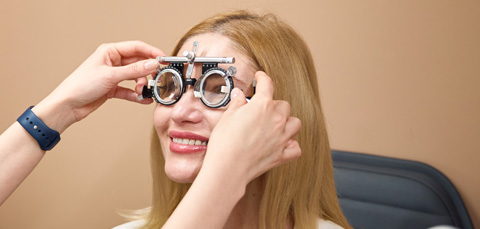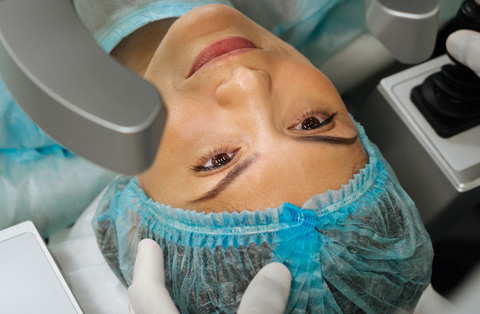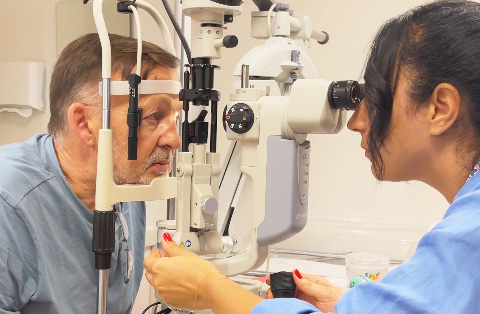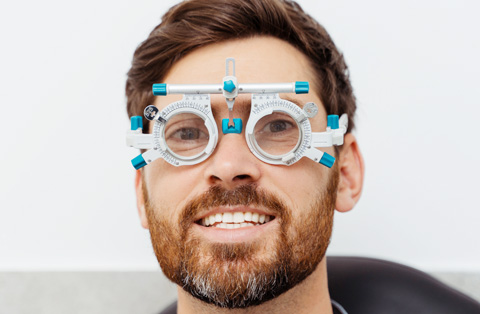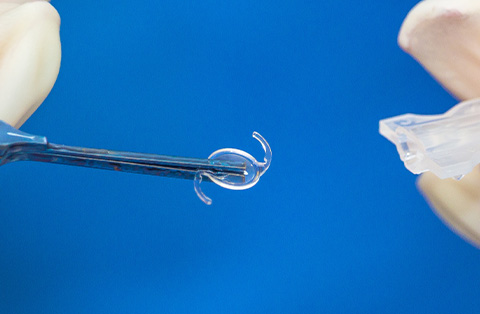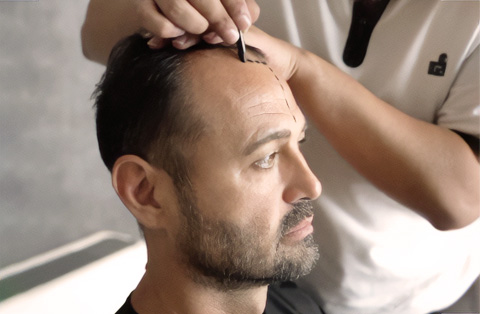Confused about which laser eye surgery is right for you? This guide compares LASIK, LASEK, PRK, and SMILE to help you choose the safest and most effective option for your vision needs.
What Are the Main Differences Between LASIK, LASEK, PRK, and SMILE Eye Surgery?
The main differences between LASIK, LASEK, PRK, and SMILE lie in how each type of laser eye surgery accesses and reshapes the cornea. All aim to correct refractive errors like myopia, hyperopia, and astigmatism. However, they use different techniques and recovery processes. Here’s how they differ in a simplified comparison:
LASIK (Laser-Assisted In Situ Keratomileusis)
A flap is created in the cornea using a femtosecond laser or a microkeratome. The surgeon lifts the flap, reshapes the corneal tissue underneath with an excimer laser, then repositions the flap. It heals naturally without stitches.
LASEK (Laser-Assisted Sub-Epithelial Keratectomy)
Instead of creating a flap, the surgeon loosens the outer layer of the cornea (epithelium) with an alcohol solution. The epithelium is moved aside, and an excimer laser reshapes the cornea. The epithelium is then repositioned.
PRK (Photorefractive Keratectomy)
This is the predecessor of LASEK. The epithelium is removed completely rather than preserved. The laser reshapes the cornea underneath. A new epithelial layer grows back naturally over a few days.
SMILE (Small Incision Lenticule Extraction)
No flap is created. A femtosecond laser creates a small disc of tissue (lenticule) within the cornea, which is then removed through a tiny incision. The corneal surface remains almost untouched.
These methods differ in how invasive they are, how quickly vision recovers, and how suitable they are for people with thin corneas or dry eyes. Each has specific advantages and is chosen based on the patient’s eye structure and lifestyle.
How Each Procedure Reshapes the Cornea
Each laser eye surgery reshapes the cornea to correct how light focuses on the retina. But the techniques differ in precision, depth, and method:
LASIK
After creating a thin corneal flap, the surgeon uses an excimer laser to remove microscopic amounts of tissue from the stromal layer of the cornea. This reshaping flattens or steepens the cornea depending on the refractive error. The flap is then repositioned.
LASEK
The surgeon loosens the epithelial layer with alcohol and moves it aside. Then, an excimer laser reshapes the stromal layer just like in LASIK. Afterward, the epithelium is moved back over the treated area and protected with a bandage contact lens.
PRK
The epithelium is completely removed. The excimer laser directly reshapes the surface of the stromal layer underneath. A new epithelial layer naturally regenerates over several days after the procedure.
SMILE
A femtosecond laser creates a small, lens-shaped piece of tissue (lenticule) inside the cornea. The surgeon removes this lenticule through a small incision. This changes the shape of the cornea without disturbing the surface much.
The main goal in all these procedures is to change the curvature of the cornea so that light focuses correctly on the retina. The difference is how deep the treatment goes and how much of the cornea is affected.
Comparing Recovery Times Between Procedures
Recovery times vary significantly between LASIK, LASEK, PRK, and SMILE due to how much the surface of the eye is disrupted:
LASIK
Recovery is usually fast. Most patients notice clearer vision within 24 to 48 hours. Full stabilization may take a few weeks. Since the flap heals quickly, discomfort is minimal.
LASEK
Recovery is slower. The epithelium needs time to reattach and heal. Vision may improve gradually over 1 to 2 weeks, with full clarity often reached after several weeks. Discomfort in the first few days is common.
PRK
Similar to LASEK, but healing takes a bit longer since the epithelium is removed entirely. Vision typically improves within a week, but it can take up to a month or more for full recovery. Discomfort can be more intense early on.
SMILE
Recovery is relatively quick. Because no flap or large surface wound is involved, patients often experience good vision within a few days. Discomfort is usually mild and short-lived.
In summary, LASIK and SMILE offer faster recovery. PRK and LASEK require more healing time and patience, but they are better options for certain corneal conditions.
How Do I Know Which Laser Eye Surgery Is Best for Me?
The best laser eye surgery depends on the unique structure of your eyes, your lifestyle, and your medical history. A detailed eye examination is necessary to decide the right option. Here are key factors your ophthalmologist will evaluate:
Corneal Thickness
LASIK requires a certain corneal thickness to create a flap. If your cornea is thin, PRK or LASEK may be safer.Dry Eye Tendency
LASIK may worsen dry eye symptoms. SMILE and PRK are gentler on the eye surface and may be better for people with dry eyes.Occupation and Lifestyle
If you play contact sports or have a physically demanding job, SMILE or PRK might be preferred since they don’t involve a corneal flap that could dislodge.Prescription Range
All four methods correct myopia, hyperopia, and astigmatism, but SMILE is currently approved for certain types of myopia and astigmatism only.Healing Time Preference
If you prefer fast recovery, LASIK or SMILE might be suitable. If safety in complex cases is more important than quick healing, PRK or LASEK might be better.
Your surgeon will use corneal mapping, refraction tests, and tear film analysis to guide this choice. What’s best for one patient may not be right for another.
Comparison chart of the difference between lasik and lasek and PRK and SMILE
Here is a simple and clear comparison chart showing the key differences between LASIK, LASEK, PRK, and SMILE:
Feature | LASIK | LASEK | PRK | SMILE |
Flap Creation | Yes (corneal flap) | No flap, epithelium moved aside | No flap, epithelium removed | No flap, small incision only |
Laser Used | Excimer + Femtosecond (for flap) | Excimer | Excimer | Femtosecond |
Corneal Surface Impact | Moderate | Minimal surface damage | More surface impact | Minimal |
Pain During Recovery | Mild | Moderate | More discomfort | Minimal |
Vision Recovery Time | 1–2 days | 5–7 days | 7–10 days | 2–4 days |
Best for Thin Corneas | No | Yes | Yes | Sometimes |
Dry Eye Risk | Higher | Moderate | Lower | Lower |
Long-Term Stability | High | High | High | High |
Suitability for Sports | Less ideal (due to flap) | Better | Better | Excellent |
Common Use | Most common globally | Less common | Good alternative for LASIK-ineligible cases | Increasingly popular |
This chart provides a quick overview. However, final suitability must be assessed by an eye care professional based on detailed examination.
What Are the Recovery and Healing Times for Different Eye Surgeries?
Recovery and healing times vary based on how each procedure affects the cornea. Some methods heal quickly but may not be suitable for all eyes. Others take longer but offer advantages in specific cases. Here's a summary:
LASIK
Initial recovery: 24–48 hours
Return to normal activities: 1–2 days
Complete healing: A few weeks
Discomfort: Mild and short-lived
LASEK
Initial recovery: 5–7 days
Return to normal activities: About 1 week
Complete healing: Several weeks
Discomfort: Moderate in first few days
PRK
Initial recovery: 7–10 days
Return to normal activities: 1–2 weeks
Complete healing: Up to 1 month
Discomfort: Noticeable in early days, managed with drops and bandage lens
SMILE
Initial recovery: 2–4 days
Return to normal activities: 3–4 days
Complete healing: A few weeks
Discomfort: Very mild
In general, LASIK and SMILE offer faster visual recovery and less discomfort. LASEK and PRK require more patience, but they are safer for thin or irregular corneas.
How Effective Are Different Laser Eye Surgeries for Astigmatism?
Laser eye surgeries are generally effective in treating astigmatism, but the degree of correction and precision depends on the technique and the severity of the condition.
LASIK
Highly effective for mild to moderate astigmatism. It can correct up to 6 diopters in most cases. The customized treatment maps the cornea for precise reshaping, leading to sharp vision.
LASEK
Effective for mild to moderate astigmatism. Suitable for patients who are not good candidates for LASIK due to thin corneas. Results are comparable to LASIK, though recovery is slower.
PRK
Similar outcomes to LASIK and LASEK for astigmatism. It’s often recommended for patients with thinner corneas or higher risk of eye trauma. It also offers stable, long-term results.
SMILE
Effective for mild to moderate astigmatism. However, it’s currently limited to correcting up to around 3 diopters of astigmatism. The technology is evolving to expand its correction range.
In most patients, all four procedures significantly reduce or eliminate the need for glasses or contact lenses. However, pre-surgical assessment is crucial to match the technique to the patient’s specific needs and corneal shape.
What Are the Risks and Complications of Each Procedure?
Laser eye surgeries are generally safe when performed by experienced surgeons. However, as with all surgical procedures, they carry some risks. The type and frequency of complications vary depending on the method used.
LASIK
This is a commonly performed and mostly safe procedure.
Possible complications include:
Dry eyes
Flap-related issues (displacement, wrinkles)
Halos or glare, especially at night
Undercorrection or overcorrection
Rare infection or inflammation
LASEK
It is considered safe, especially for patients with thin corneas.
Possible complications include:
Temporary hazy vision
Longer healing time
Eye discomfort in the first few days
Risk of regression (partial return of vision error)
PRK
Safe and often preferred for those with active lifestyles.
Possible complications include:
Eye discomfort for several days
Slow visual recovery
Risk of corneal haze
Rare delayed epithelial healing
Mild night vision issues
SMILE
Minimally invasive and has a low risk profile.
Possible complications include:
Temporary dry eyes
Light sensitivity
Slight undercorrection
Visual fluctuations during early healing
These procedures are not considered high-risk when performed by skilled surgeons with proper screening. Serious complications are rare. A detailed preoperative exam helps avoid most risks and ensures the chosen technique matches your eye’s needs.
How Much Do Different Laser Eye Surgeries Cost?
The cost of laser eye surgery varies based on the procedure type, technology used, surgeon's experience, and clinic location. Here's an overview of average price ranges for each procedure:
LASIK (Laser-Assisted In Situ Keratomileusis)
Average cost per eye: $1,500 to $3,500
Factors influencing cost: Technology used (e.g., bladeless or wavefront-guided), surgeon's expertise, and geographic location
Notes: LASIK is widely performed and often offers quick recovery times.
LASEK (Laser-Assisted Sub-Epithelial Keratectomy)
Average cost per eye: Comparable to PRK, ranging from $1,800 to $3,000
Factors influencing cost: Similar to PRK, including technology and surgeon's experience
Notes: LASEK is suitable for patients with thinner corneas or those at higher risk of eye trauma.
PRK (Photorefractive Keratectomy)
Average cost per eye: $1,800 to $3,000
Factors influencing cost: Technology used, surgeon's expertise, and clinic location
Notes: PRK is often recommended for patients with thin corneas or those engaged in contact sports.
SMILE (Small Incision Lenticule Extraction)
Average cost per eye: $2,000 to $3,500
Factors influencing cost: Advanced technology and surgeon's training in SMILE procedure
Notes: SMILE is a minimally invasive procedure with a quick recovery time.
It's essential to consult with a qualified ophthalmologist to determine the most suitable procedure based on individual eye health and vision correction needs.
Laser Eye Surgery Costs in Türkiye
Laser eye surgeries in Türkiye combine affordability with international standards of care. Patients benefit from lower prices without sacrificing quality or safety.
Affordable Costs
The cost of LASIK, LASEK, PRK, and SMILE in Türkiye is much lower compared to the United States, the United Kingdom, or Western Europe. This is not due to lower quality, but because of reduced operational costs and currency advantages. Many patients find that they can cover both their treatment and travel expenses for less than the procedure alone would cost in their home country.
World-Class Standards
Türkiye’s eye clinics use the latest laser technology and equipment. Many surgeons are trained in Europe or the US and have years of experience. Clinics are regulated, hygienic, and equipped with advanced diagnostic and surgical tools. Services are often multilingual, which makes the process easier for international patients.
Türkiye offers the chance to receive high-quality eye care with safe and modern techniques at a much more accessible cost. This balance of value and quality has made it a trusted destination for patients from all over the world.
